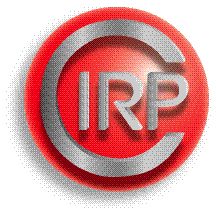Definition
Cutting hard materials like hardened steel with hardness values exceeding 47 HRC is called hard material cutting. All cutting processes like turning, drilling, milling, broaching, and other processes with geometrically defined cutting edges (as distinct from abrasive processes) comprise this category of production method.
Theory and Application
History
In the past, hard materials were – unless in need of repair – exclusively processed and brought to the final shape by abrasive processes. The development of appropriate cutting tools, machine tools, and machining strategies through the 1980s and 1990s has enabled the majority of hard materials to be cut, and hard cutting is now established in industry. In particular, tool materials of high hardness and sufficient strength at elevated temperatures were the primary technical...
References
Barry J (2000) Machining hardened steels, cutting tool wear, acoustic emission, chip formation and surface integrity. PhD thesis, University College, Dublin
Barry J (2012) Personal notice on occasion of the reviewing process
Barry J, Byrne G (2002) The mechanisms of chip formation in machining hardened steels. Trans ASME J Manuf Sci Eng 124:528–535
Borbe C (2001) Bauteilverhalten hartgedrehter Funktionsflächen [Behavior of components depending on hard machining of functional surfaces]. Dr.-Ing. Thesis Univ, Hannover
Brandt D (1995) Randzonenbeeinflussung beim Hartdrehen [Subsurface influences of hard turning]. Dr.-Ing. Thesis Univ, Hannover
Brinksmeier E, Reckling-Wilkening K (1992) Gefügebeeinflussung durch spanende Bearbeitung [Structure influencing by cutting]. Praktische Metallogr, Sonderbd 23:47–56
Chou YK, Evans CJ (1997) Finish hard turning of powder metallurgy M50 steel. Trans NAMRI/SME 25:81–86
Denkena B, Toenshoff HK (2012) Cutting fundamentals. Springer, Heidelberg
King AG, Wheildon WM (1966) Ceramics in machining processes. Academic, New York
Klocke F, Brinksmeier E, Weinert K (2005) Capability profile of hard cutting and grinding processes. Ann CIRP 54(2):557–580
Koch K-F (1996) Technologie des Hochpräzisions-Hartdrehens [Technology of high precision hard turning]. Dr.-Ing. thesis, RWTH, Aachen
Schmidt J (1999) Mechanische und thermische Wirkungen beim Drehen gehärteter Stähle [Mechanical and thermal effects of turning hardened steels]. Dr.-Ing. thesis, Univ. Hannover/Fortschritt-Berichte VDI, Reihe 2, Nr. 519, Berichte aus dem Institut für Fertigungstechnik und Spanende Werkzeugmaschinen, Universität Hannover. VDI-Verlag, Duesseldorf
Schreiber E (1976) Die Werkstoffbeeinflussung weicher und gehärteter Oberflächenschichten durch spanende Bearbeitung [Material influences of soft and hard surfaces by cutting]. VDI-Bericht Nr. 256, Duesseldorf, p 67–79
Sölter J (2010) Ursachen und Wirkungsmechanismen der Entstehung von Verzug infolge spanender Bearbeitung [Causes and mechanisms of distortion development by machining]). Dr.-Ing. thesis, Univ. Bremen/Forschungsberichte aus der Stiftung Institut für Werkstofftechnik Bremen. Shaker, Aachen
Spintig W (1995) Werkstoffbeeinflussung und Prozessführung beim Hartbohren [Material influences and process conduct of hard drilling]. Dr.-Ing. thesis, Univ. Hannover/Fortschritt-Berichte VDI, Reihe 2, Nr. 358, Berichte aus dem Institut für Umformtechnik und Umformmaschinen, Universität Hannover. VDI-Verlag, Duesseldorf
Toenshoff HK, Bußmann W, Stanske C (1986) Hartbearbeitung durch Drehen und Fräsen [hard cutting by turning and milling]. tz für Metallbearbeitung 80:35–40
Toenshoff HK, Karpuschewski B, Borbe C (1997) Comparison of basic mechanisms in cutting and grinding of hardened steel. Prod Eng IV(2):5–8
Toenshoff H K, Karpuschewsky B, Borbe C (1998) Hard machining: state of research. In: Proceedings of CIRP/VDI conference on international high performance tools, VDI Berichte, Ausgabe 1399. Duesseldorf, p 253–277
Toenshoff HK, Arendt C, Ben Amor R (2000) Cutting of hardened steel. Ann CIRP 49(2):547–566
Wobker H-G (1996) Hartbearbeitung [Hard machining]. Habilitation thesis, Univ. Hannover/Fortschritt-Berichte VDI, Reihe 2, Fertigungstechnik, Nr. 420, Berichte aus dem Institut für Fertigungstechnik und Spanende Werkzeugmaschinen, Universität Hannover. VDI-Verlag, Düsseldorf
Author information
Authors and Affiliations
Corresponding author
Editor information
Editors and Affiliations
Section Editor information
Rights and permissions
Copyright information
© 2018 CIRP
About this entry
Cite this entry
Toenshoff, H.K. (2018). Hard Material Cutting. In: The International Academy for Production (eds) CIRP Encyclopedia of Production Engineering. Springer, Berlin, Heidelberg. https://doi.org/10.1007/978-3-642-35950-7_6406-4
Download citation
DOI: https://doi.org/10.1007/978-3-642-35950-7_6406-4
Received:
Accepted:
Published:
Publisher Name: Springer, Berlin, Heidelberg
Print ISBN: 978-3-642-35950-7
Online ISBN: 978-3-642-35950-7
eBook Packages: Springer Reference EngineeringReference Module Computer Science and Engineering


